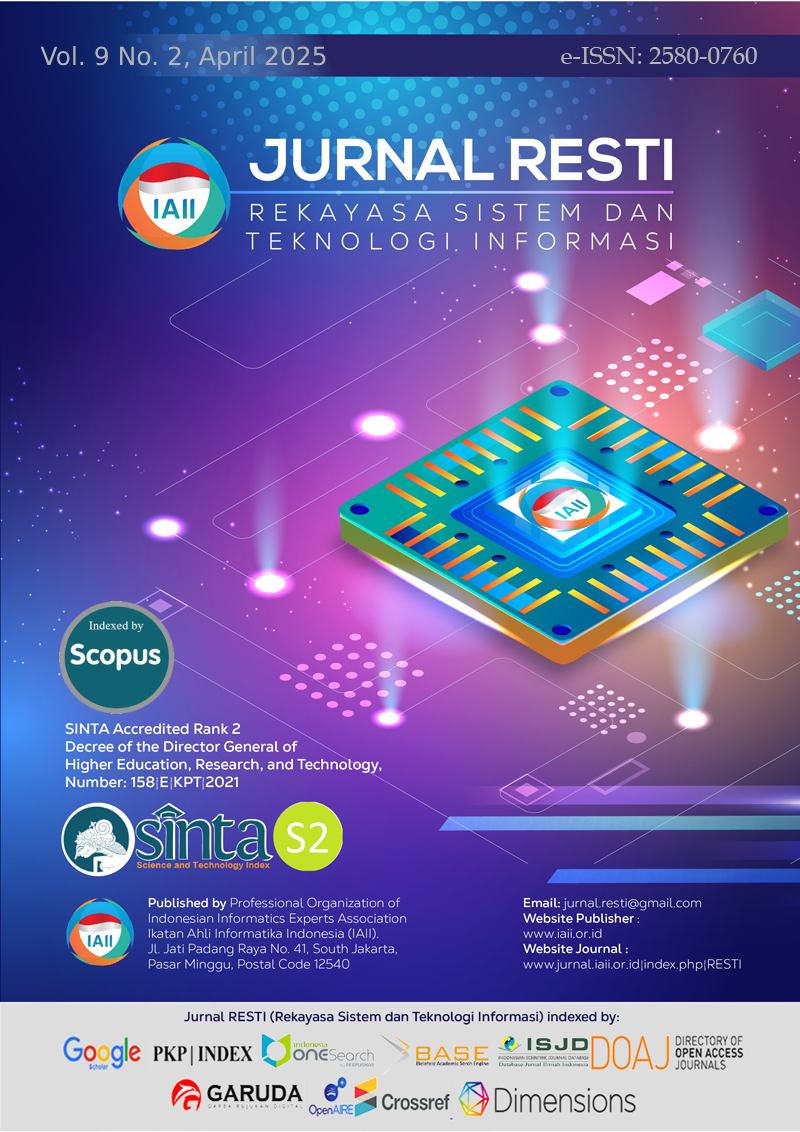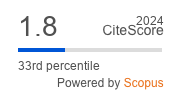Feature Selection Using Pearson Correlation for Ultra-Wideband Ranging Classification
Abstract
Indoor positioning plays a crucial role in various applications, including smart homes, healthcare, robotics, and asset tracking. However, achieving high positioning accuracy in indoor environments remains a significant challenge due to obstacles that introduce NLOS conditions and multipath effects. These conditions cause signal attenuation, reflection, and interference, leading to decreased localization precision. This research addresses these challenges by optimizing feature selection LOS, NLOS, and multipath classification within Ultra-Wideband (UWB) ranging systems. A systematic feature selection approach based on Pearson correlation is employed to identify the most relevant features from an open-source dataset, ensuring efficient classification while minimizing computational complexity. The selected features are used to train multiple machine-learning classifiers, including Random Forest, Ridge Classifier, Gradient Boosting, K-Nearest Neighbor, and Logistic Regression. Experimental results demonstrate that the proposed feature selection method significantly reduces model training and testing times without compromising accuracy. The Random Forest and Gradient Boosting models exhibit superior performance, maintaining classification accuracy above 90%. The reduction in computational overhead makes the proposed approach highly suitable for real-time applications, particularly in edge-computing environments where processing efficiency is critical. These findings highlight the effectiveness of Pearson correlation-based feature selection in improving UWB-based indoor positioning systems. The optimized feature set facilitates robust LOS, NLOS, and multipath classification while reducing resource consumption, making it a promising solution for scalable and real-time indoor localization applications.
Downloads
References
M. Rosiak, M. Kawulok, and M. Maćkowski, “The Effectiveness of UWB-Based Indoor Positioning Systems for the Navigation of Visually Impaired Individuals,” Applied Sciences (Switzerland), vol. 14, no. 13, Jul. 2024, doi: 10.3390/app14135646.
X. Yu, Q. Li, J. P. Queralta, J. Heikkonen, and T. Westerlund, “Applications of UWB Networks and Positioning to Autonomous Robots and Industrial Systems,” Mar. 2021, doi: 10.1109/MECO52532.2021.9460266.
W. Zhao, A. Goudar, X. Qiao, and A. P. Schoellig, “UTIL: An ultra-wideband time-difference-of-arrival indoor localization dataset,” International Journal of Robotics Research, Sep. 2024, doi: 10.1177/02783649241230640.
W. He, M. Xi, H. Gardner, B. Swift, and M. Adcock, “Spatial anchor based indoor asset tracking,” in Proceedings - 2021 IEEE Conference on Virtual Reality and 3D User Interfaces, VR 2021, Institute of Electrical and Electronics Engineers Inc., Mar. 2021, pp. 255–259. doi: 10.1109/VR50410.2021.00047.
X. You, D. Tian, C. Liu, X. Yu, and L. Song, “Vehicles positioning in tunnel: A real-time localization system using DL-TDOA technology,” Journal of Internet Technology, vol. 22, no. 5, pp. 967–978, 2021, doi: 10.53106/160792642021092205003.
J. Kolakowski, V. Djaja-Josko, M. Kolakowski, and K. Broczek, “UWB/BLE tracking system for elderly people monitoring,” Sensors (Switzerland), vol. 20, no. 6, Mar. 2020, doi: 10.3390/s20061574.
P. Wang, B. Guo, Z. Wang, and Z. Yu, “ShopSense:Customer Localization in Multi-Person Scenario with Passive RFID Tags,” IEEE Trans Mob Comput, vol. 21, no. 5, pp. 1812–1828, May 2022, doi: 10.1109/TMC.2020.3029833.
Y. X. Zhang and Y. Zi, “Mixed reality annotations system for museum space based on the uwb positioning and mobile device,” in Lecture Notes in Computer Science (including subseries Lecture Notes in Artificial Intelligence and Lecture Notes in Bioinformatics), Springer Science and Business Media Deutschland GmbH, 2020, pp. 328–342. doi: 10.1007/978-3-030-58465-8_25.
H. Fei, F. Xiao, B. Sheng, H. Huang, and L. Sun, “Motion path reconstruction in indoor environment using commodity Wi-Fi,” IEEE Trans Veh Technol, vol. 68, no. 8, pp. 7668–7678, Aug. 2019, doi: 10.1109/TVT.2019.2921408.
S. M. Asaad and H. S. Maghdid, “A Comprehensive Review of Indoor/Outdoor Localization Solutions in IoT era: Research Challenges and Future Perspectives,” Jul. 20, 2022, Elsevier B.V. doi: 10.1016/j.comnet.2022.109041.
J. Ninnemann, P. Schwarzbach, and O. Michler, “Toward UWB Impulse Radio Sensing: Fundamentals, Potentials, and Challenges,” in UWB Technology - New Insights and Developments, IntechOpen, 2023. doi: 10.5772/intechopen.110040.
N. El-Sheimy and Y. Li, “Indoor navigation: state of the art and future trends,” Dec. 01, 2021, Springer. doi: 10.1186/s43020-021-00041-3.
Y. Li et al., “Location-Enabled IoT (LE-IoT): A Survey of Positioning Techniques, Error Sources, and Mitigation,” Apr. 2020, doi: 10.1109/JIOT.2020.3019199.
C. Lian, S. Referent, I. Ulrich, R. Korreferent, and I. U. Witkowski, “Bidirectional UWB Localization with Rigorous Sectoral Evaluations.” Accessed: Feb. 18, 2025. [Online]. Available: https://www.researchgate.net/publication/367157814_Bidirectional_UWB_Localization_with_Rigorous_Sectoral_Evaluations
V. Barral, C. J. Escudero, J. A. García-Naya, and R. Maneiro-Catoira, “NLOS identification and mitigation using low-cost UWB devices,” Sensors (Switzerland), vol. 19, no. 16, Aug. 2019, doi: 10.3390/s19163464.
L. Flueratoru, E. S. Lohan, and D. Niculescu, “Self-Learning Detection and Mitigation of Non-Line-of-Sight Measurements in Ultra-Wideband Localization,” in 2021 International Conference on Indoor Positioning and Indoor Navigation, IPIN 2021, Institute of Electrical and Electronics Engineers Inc., 2021. doi: 10.1109/IPIN51156.2021.9662532.
C. L. Sang, B. Steinhagen, J. D. Homburg, M. Adams, M. Hesse, and U. Rückert, “Identification of NLOS and multi-path conditions in UWB localization using machine learning methods,” Applied Sciences (Switzerland), vol. 10, no. 11, Jun. 2020, doi: 10.3390/app10113980.
Z. Cui, T. Liu, S. Tian, R. Xu, and J. Cheng, “Non-Line-of-Sight Identification for UWB Positioning Using Capsule Networks,” IEEE Communications Letters, vol. 24, no. 10, pp. 2187–2190, Oct. 2020, doi: 10.1109/LCOMM.2020.3003688.
A. G. Ferreira, D. Fernandes, S. Branco, A. P. Catarino, and J. L. Monteiro, “Feature selection for real-time nlos identification and mitigation for body-mounted uwb transceivers,” IEEE Trans Instrum Meas, vol. 70, 2021, doi: 10.1109/TIM.2021.3070619.
F. Che, Q. Z. Ahmed, F. A. Khan, and P. I. Lazaridis, “Feature-Based Generalized GaussianDistribution Method for NLoS Detectionin Ultra-Wideband (UWB) IndoorPositioning System,” IEEE SENSOR JOURNAL, vol. 22, no. 19, pp. 18726–18739, 2022, doi: 10.23919/ICAC50006.2021.9594226.
F. Che, W. Bin Abbas, Q. Z. Ahmed, B. Amjad, F. A. Khan, and P. I. Lazaridis, “Weighted Naive Bayes Approach for Imbalanced Indoor Positioning System Using UWB,” in 2022 IEEE International Black Sea Conference on Communications and Networking, BlackSeaCom 2022, Institute of Electrical and Electronics Engineers Inc., 2022, pp. 72–76. doi: 10.1109/BlackSeaCom54372.2022.9858257.
M. Stocker, M. Gallacher, C. A. Boano, and K. Römer, “Performance of support vector regression in correcting UWB ranging measurements under LOS/NLOS conditions,” in CPS-IoTBench 2021 - Proceedings of the 2021 Benchmarking Cyber-Physical Systems and Internet of Things, Association for Computing Machinery, Inc, May 2021, pp. 6–11. doi: 10.1145/3458473.3458820.
V. Barral, C. J. Escudero, J. A. García-Naya, and P. Suárez-Casal, “Environmental cross-validation of NLOS machine learning classification/mitigation with low-cost uwb positioning systems,” Sensors (Switzerland), vol. 19, no. 24, Dec. 2019, doi: 10.3390/s19245438.
M. Si, Y. Wang, H. Siljak, C. K. Seow, and H. Yang, “A lightweight CIR-based CNN with MLP for NLOS/LOS identification in a UWB positioning system,” IEEE Communications Letters, 2023, doi: 10.1109/LCOMM.2023.3260953.
A. Sitti Syathirah, R. Munadi, G. Indah Hapsari, and J. Telekomunikasi, “Enhancement of Accuracy For UWB Indoor Positioning Using Support Vector Regression.”
S. Kram, M. Stahlke, T. Feigl, J. Seitz, and J. Thielecke, “UWB channel impulse responses for positioning in complex environments: A detailed feature analysis,” Sensors (Switzerland), vol. 19, no. 24, Dec. 2019, doi: 10.3390/s19245547.
J. Sun, S. Ma, H. Zhou, C. Du, and S. Li, “Measurement and Statistical Analysis of Distinguishable Multipaths in Underground Tunnels,” Int J Antennas Propag, vol. 2020, 2020, doi: 10.1155/2020/2501832.
X. Zheng et al., “Full Parameter Time Complexity (FPTC): A Method to Evaluate the Running Time of Machine Learning Classifiers for Land Use/Land Cover Classification,” IEEE J Sel Top Appl Earth Obs Remote Sens, vol. 14, pp. 2222–2235, 2021, doi: 10.1109/JSTARS.2021.3050166.
A. G. Putrada, M. Abdurohman, D. Perdana, and H. H. Nuha, “CIMA: A Novel Classification-Integrated Moving Average Model for Smart Lighting Intelligent Control Based on Human Presence,” Complexity, vol. 2022, 2022, doi: 10.1155/2022/4989344.
G. I. Hapsari, R. Munadi, B. Erfianto, and I. D. Irawati, “Accuracy Improvement for Indoor Positioning Using Decawave on ESP32 UWB Pro with Display and Regression,” Journal of Robotics and Control (JRC), vol. 5, no. 3, pp. 851–862, 2024, doi: 10.18196/jrc.v5i3.20825.
Cung Lian Sang, “Identification-of-NLOS-and-MP-in-UWB-using-ML (Dataset),” Identification of NLOS and Multi-Path Conditions in UWB Localization Using Machine Learning Methods, 2020. Accessed: Feb. 18, 2025. [Online]. Available: https://github.com/cliansang/Identification-of-NLOS-and-MP-in-UWB-using-ML
Copyright (c) 2025 Jurnal RESTI (Rekayasa Sistem dan Teknologi Informasi)

This work is licensed under a Creative Commons Attribution 4.0 International License.
Copyright in each article belongs to the author
- The author acknowledges that the RESTI Journal (System Engineering and Information Technology) is the first publisher to publish with a license Creative Commons Attribution 4.0 International License.
- Authors can enter writing separately, arrange the non-exclusive distribution of manuscripts that have been published in this journal into other versions (eg sent to the author's institutional repository, publication in a book, etc.), by acknowledging that the manuscript has been published for the first time in the RESTI (Rekayasa Sistem dan Teknologi Informasi) journal ;








